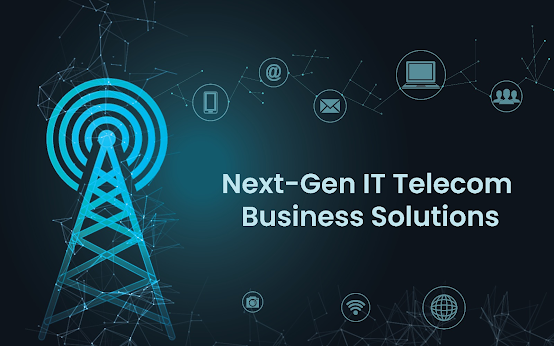In today's rapidly evolving digital landscape, information technology (IT) is at the forefront of innovation and progress. Businesses across the globe rely on IT solutions to streamline operations, enhance customer experiences, and stay competitive in an increasingly digital world. One of the latest game-changers in this field is the integration of ChatGPT for information technology, which opens up new horizons for communication, problem-solving, and automation. In this article, we will explore the role of ChatGPT in the IT sector and delve into the potential of Custom ChatGPT App to transform the way businesses operate.
ChatGPT for Information Technology: A Brief Overview
ChatGPT, powered by advanced natural language processing (NLP) technology, has taken the world by storm with its ability to understand and generate human-like text. It has already proven its value in various sectors, from customer support to content generation. However, its potential in the IT field is particularly promising.
- Enhanced Customer Support: ChatGPT can serve as a virtual IT helpdesk, providing instant responses to user queries. Whether it's troubleshooting technical issues or guiding users through software installations, ChatGPT can significantly improve the efficiency of customer support teams.
- Knowledge Base Management: IT departments can use ChatGPT to maintain comprehensive knowledge bases. It can quickly search and retrieve information, making it easier for IT professionals to access critical data and resolve issues promptly.
- Code Assistance: Developers can leverage ChatGPT for code suggestions, debugging, and problem-solving. It can help them write code faster, reduce errors, and improve the overall development process.
- IT Training: ChatGPT can also be used for training purposes. It can create interactive learning modules, answer trainee questions, and facilitate knowledge transfer within IT teams.
- Automation: By integrating ChatGPT with IT systems, routine tasks such as server monitoring, data analysis, and report generation can be automated. This frees up IT personnel to focus on more strategic activities.
Custom ChatGPT Apps: Tailored Solutions for IT Challenges
While the potential of ChatGPT in the IT sector is evident, the real game-changer lies in the development of Custom ChatGPT Apps. These tailored applications take ChatGPT's capabilities to the next level, addressing specific challenges and requirements within the IT industry.
- Customized Knowledge Bases: IT departments can develop ChatGPT Apps that are trained on their organization's unique knowledge base. This ensures that the AI understands the specific processes, systems, and terminologies relevant to the business.
- Security and Compliance: Custom ChatGPT Apps can be designed with robust security and compliance features. This is crucial in IT, where sensitive data and regulatory requirements are paramount. These apps can be programmed to handle data securely and adhere to industry standards.
- Workflow Integration: Integration with existing IT workflows is essential for seamless adoption. Custom ChatGPT Apps can be tailored to work with specific tools and platforms, making them an integral part of the IT ecosystem.
- Problem-Specific Solutions: IT professionals often face unique challenges. Custom ChatGPT Apps can be fine-tuned to address these challenges effectively. For example, an app could be designed to diagnose and suggest solutions for common network issues in a specific organization.
- Continuous Improvement: These apps can learn and evolve over time. By analyzing user interactions and feedback, they can improve their responses and become increasingly valuable assets to the IT team.
Case Study: The Benefits of a Custom ChatGPT App in IT
Let's consider a hypothetical scenario to illustrate the impact of a Custom ChatGPT App in an IT department:
XYZ Corporation, a multinational company, was grappling with a high volume of IT support requests from employees across the globe. Their existing ticketing system was overwhelmed, leading to delays in issue resolution and dissatisfied users.
To address this challenge, XYZ Corporation decided to develop a Custom ChatGPT App tailored to their IT environment. Here's how it transformed their operations:
- Instant Support: The ChatGPT App provided instant responses to user queries, reducing the need for waiting in the support queue.
- Knowledge Base Management: It maintained an up-to-date knowledge base, making it easier for IT professionals to access information and resolve issues swiftly.
- Multilingual Support: With the ability to understand multiple languages, the app catered to the diverse workforce of XYZ Corporation, enhancing user experiences.
- Automation: Routine tasks, such as password resets and software installations, were automated, allowing IT staff to focus on more complex issues.
- Continuous Improvement: The app continuously learned from user interactions, refining its responses and becoming more effective over time.
Within months, XYZ Corporation saw a significant improvement in their IT support efficiency. User satisfaction levels skyrocketed, and the IT team could now allocate more time to strategic projects, thanks to the ChatGPT App's automation capabilities.
Conclusion: The Future of IT with Custom ChatGPT Apps
As the IT landscape continues to evolve, businesses must embrace innovative solutions to stay competitive. ChatGPT for information technology is a prime example of how AI can revolutionize operations, enhance customer support, and drive efficiency.
The real power, however, lies in Customized ChatGPT Apps, which offer tailor-made solutions to address the unique challenges faced by IT departments. These apps can be the bridge between human expertise and AI capabilities, enabling organizations to unlock new levels of productivity and effectiveness.
The future of IT is undoubtedly intertwined with AI, and Custom ChatGPT Apps are poised to play a pivotal role in shaping that future. It's time for businesses to explore the possibilities and leverage the potential of ChatGPT to stay ahead in the dynamic world of information technology.









